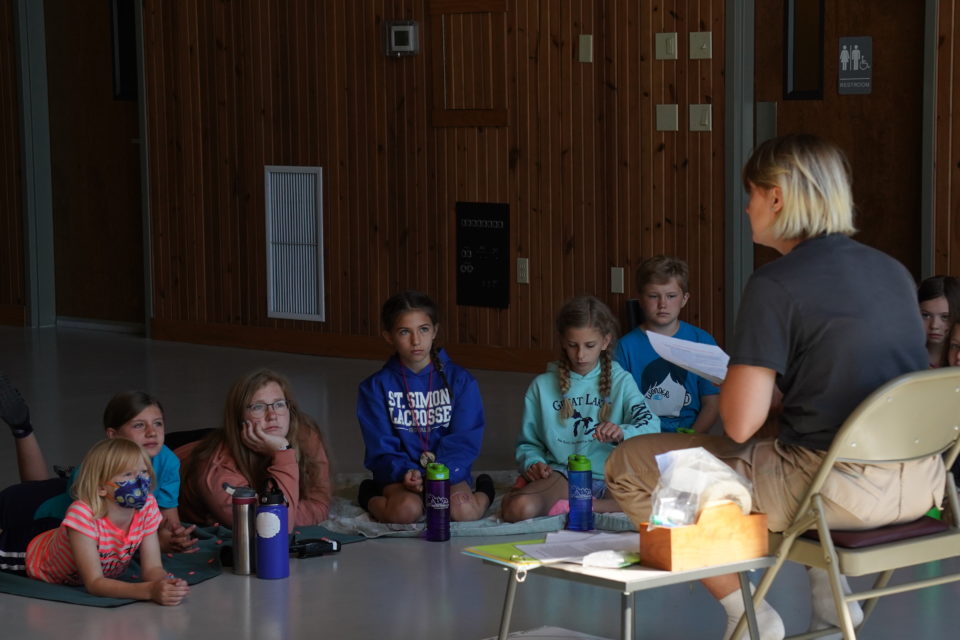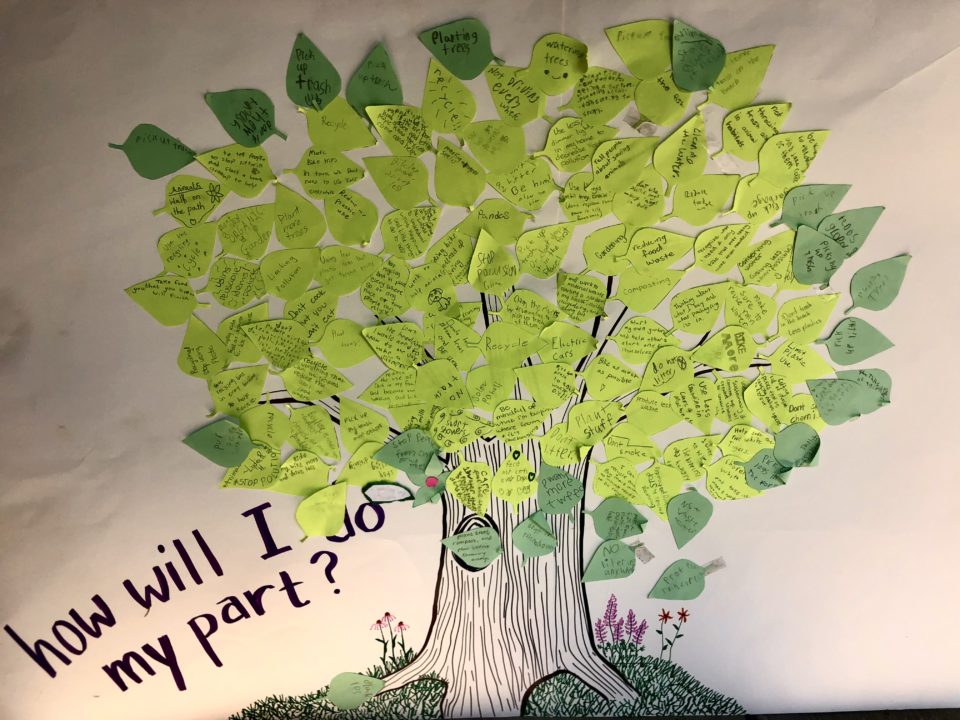Emily Hilton-Nickel has served as sustainability assistant at Camp Friedenswald over the past year bringing a passion for indigenous rights, regenerative food systems, and encouraging the connection of people with their natural surroundings. During the summer she led campers in a learning and discussion activity on Indigenous perspectives on land care. She can be seen around camp leading educational activities, working on land management projects, maintaining the compost system, working in the new camp garden, and more.

This past summer, the theme “Shaped Like the Earth” allowed campers to explore the ways in which God built us to be resilient and strong, but also able to grow and withstand change, much like the natural world around us. As a staff, we felt an important extension of this learning would include the ways in which we might live more fully in harmony with nature. After all, we are not surrounded by nature, but are a part of it. Here at Camp Friedenswald, we believe deeply in centering the stories of Indigenous communities in our place-based education, and we saw this discussion of life lived in harmony with nature as a great opportunity to learn from the oldest inhabitants of this land.
Using publicly-shared stories and teachings from nearby Indigneous groups (primarily the Potawatomi, Odawa, Ojibwe, and greater Neshnabék), I was able to compile a curriculum centered around the ways in which these cultures live in relation to the earth, and how that plays out in their earth care practices. Campers heard the story of Nanabozho and Heron, a fable through which the Neshnabék people are taught never to take more from the earth than they needed. They also learned about what Potawatomi author and scientist Robin Wall Kimmerer calls “the Honorable Harvest”, which is a compiled code of ethics Neshnabék people use to govern their foraging and hunting for food in their natural environment.
I was sure to remind students that we too, as Christians, are called to care for the earth in our spiritual texts. Hearing these stories from Indigenous groups did not mean that we could claim them as our own, but would hopefully inspire us to return to our own spiritualities with fresh eyes. I showed the students examples of ways in which different Indigenous groups were working all across the US to restore ecosystems that had been damaged, and we ended our session by having campers brainstorm ways in which they could go out and make a difference in their own communities, within their own cultural contexts.

Every age group responded differently to the course material, finding different areas of interest within it. I was blown away by the deep conversations that budded in the high school groups around the importance of earth care and the specific ways in which they could go forth in the world to do their part. These young adults really made me feel hopeful for the future of our planet. The younger groups had more fun hearing the stories and engaging with questions like “tell me about one of your favorite places in nature” and “what are some ways in which you have helped take care of the earth in your own communities?”. I heard them talk about community gardens they built at schools and churches, fundraising they had done for charities, how many had learned to compost and conserve electricity at home, and some campers even told me how they had come with their youth group to plant trees here at camp back in May! While I did hear many campers’ fears about climate change and the future of the planet, I felt that the conversations that resulted from those shared fears made everyone feel more empowered and hopeful, and less scared.
I feel very proud of the way our campers embraced this new learning experience this summer. They exceeded my expectations with the vulnerable questions they asked, the respect with which they discussed native groups, and also the passion with which they envisioned the future. I am so glad we were able to center indigeneity in our exploration of earth-centeredness this summer, but I know that this is just the beginning of camp’s work towards Indigenous education going forward. I can’t wait to see what all camp will accomplish in future years as we explore a deeper partnership with our Indigenous neighbors.